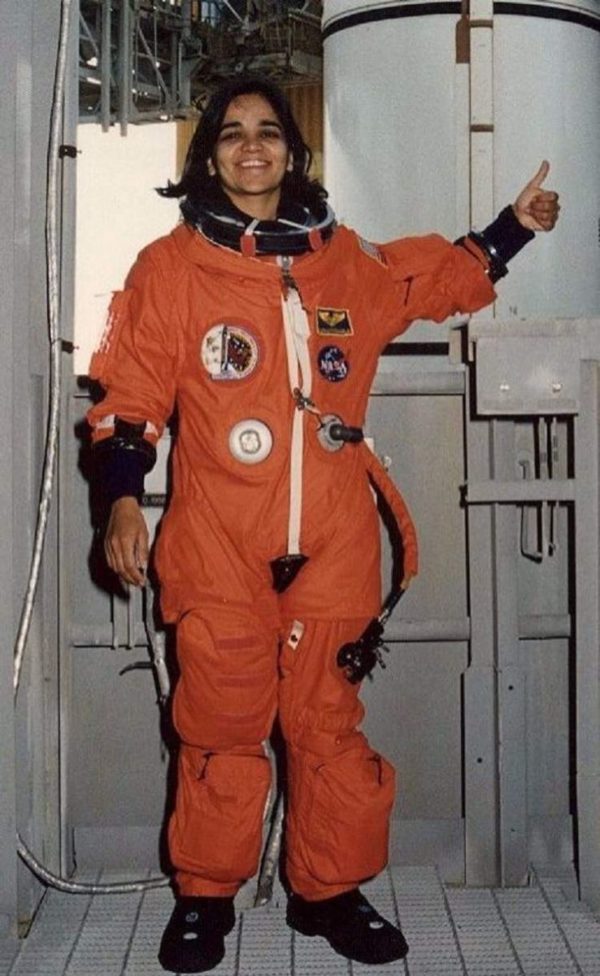Fourteen years ago, on this very day, the world lost a promising star to the sky.
The first Indian-origin woman to go to space, Kalpana Chawla, perished along with six others after their space shuttle exploded on entering the Earth’s atmosphere.
Born in March 17, 1962, in Karnal, Haryana, Chawla finished her schooling from there after which she got a degree in aeronautical engineering from the Punjab Engineering College in Chandigarh.
In 1982, she moved to the United States and pursued a Master of Science degree in aerospace engineering from the University of Texas at Arlington, and later in 1988 she got a PhD in the same from the University of Colorado. In 1988, Kalpana started working with the NASA Ames Research Center in the area of powered-lift computational fluid dynamics.
Not many may know of this, but Kalpana’s first application to NASA in 1993 was rejected; she was selected in the 1995 class.
Kalpana’s first space mission on November 19, 1997 – on Space Shuttle Columbia flight STS-87- made her the first Indian-origin woman and the second Indian, after Rakesh Sharma, to go to space. One of Kalpana’s tasks was to release the Spartan satellite.
However, a malfunction occurred, forcing the crew to spacewalk to retrieve the satellite. NASA launched an investigation into it after their return, but Kalpana was later exonerated, with the space agency even calling her “a terrific astronaut”.
When asked how she felt about being the first Indian woman in space, Kalpana would later tell India Today in an interview, “I never truly thought of being the first or second someone. Or being a small-town girl. This is just something I wanted to do. It was very important for me to enjoy it. If you want to do something, what does it matter where you are ranked? Nor does being a woman make a difference. We were all just crew members.”
Speaking about her ambition, Kalpana, who also had a Private Pilot License, said that she’d like to have another space flight again. “Actually the list of what I want to do is so long I would need a few lifetimes to achieve them. For instance, I would like to fly small planes, maybe over the Ganges one day.”
During her first space mission, Kalpana also spoke to the then Prime Minister of India Inderjit K Gujral from orbit.
“You know Kalpana, I do not know if you remember, there’s a saying by one of our poets who is very well known in the sub-continent, Iqbal. He said, ‘Sitaaron se aage jahaan aur bhi hai’. There are worlds beyond stars. And now you have seen them, how do you feel about them?”
Kalpana went on to describe the arresting sight of the sky from space. “It’s a very special feeling… When you look at the night sky (from space), what you are saying becomes very literal… It’s very much like a storybook.”
The PM and the astronaut went on to talk about several other things including how does it feel to be in a place with no gravity.
It was her second space mission in 2003, aboard STS-107, that proved to be fatal for her and the six other crew members. On February 1, the Space Shuttle Columbia disintegrated over Texas during its re-entry into the Earth’s atmosphere, just 16 minutes before landing.
The last communication that Kalpana’s family received from her was, “Our mission is successful and we are all fine here.”
In another interview to India Today, just before taking off on her final flight, Kalpana was asked about her Indian identity and its role in her massive achievement. The astronaut, would famously go on to say, “’I was not born for one corner. The whole world is my native land.’ So said Seneca, the philosopher. I have felt that connection and stewardship for Earth for as long as I can remember. And not just for Earth, but the whole universe. In summers, while growing up in India, we often slept in the courtyard under the stars.”
For the millions of children in India who looked up to her as an inspiration, Kalpana had this message. “Material interests are not the only guiding light. It is something that you’d enjoy doing in the long run. Take the time to figure out how to get there. The quickest way may not necessarily be the best. The journey matters as much as the goal. Listen to the sounds of nature. Wishing you the best on your trek towards your dreams. Take good care of our fragile planet.”
Kalpana was awarded the Congressional Space Medal of Honor, the NASA Space Flight Medal, and the NASA Distinguished Service Medal Posthumously.
In 2011, “The Edge of Time: The Authoritative Biography of Kalpana Chawla”, a book on Kalpana’s life authored by her husband Jean-Pierre Harrison was released. The couple had first met on September 2, 1982, one day after she arrived in the USA to attend the University of Texas.
During a visit to Kalpana’s school and college in Haryana after her death, Jean had said, “Soon we became friends because of many common interests, similarity in habits, hobbies and thoughts of each other which culminated in our marriage on December 2,1983.”
In the book, Jean revealed that while Kalpana was “called ‘Montu’ by the family, she chose the name ‘Kalpana’ at age three upon starting school.
Kalpana also wanted to visit India along with the crew members of her 1997 space flight. She had in fact, also got in touch with the Indian embassy in Washington and conveyed to them her wish, a desire that remained unfulfilled.
The Telegraph reported that “the embassy got down to work on her request and arrangements were being made, but no one is able to really put a finger on why the visit did not work out. India subsequently went through a change of government and attendant political uncertainty: the Prime Minister’s Office (PMO) deals with space and the changes may have contributed to the delay.”
In what is said to be her last interview, Chawla spoke about how the entrepreneur JRD Tata, who was also India’s first licensed pilot, was an inspiration for her. “The airplane that he flew for the mail flights now hangs in one of the aerodromes out there that I had had a chance to see. Seeing this airplane and just knowing what this person had done during those years was very intriguing. Definitely captivated my imagination.”






Leave a reply